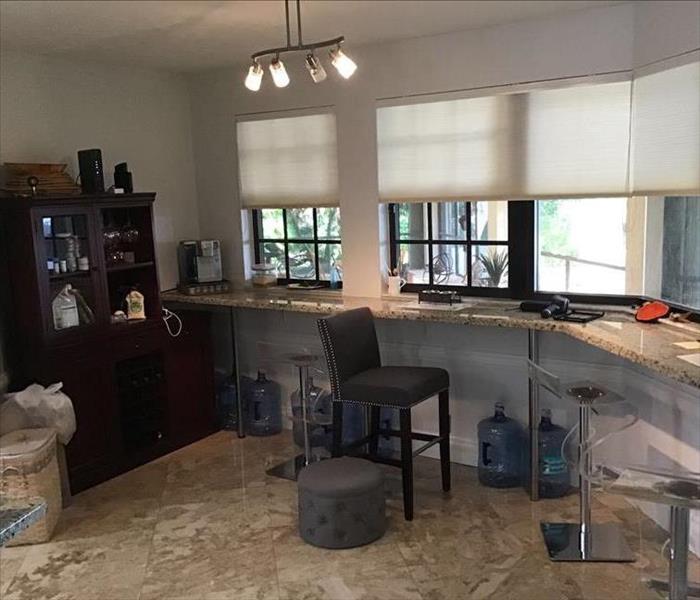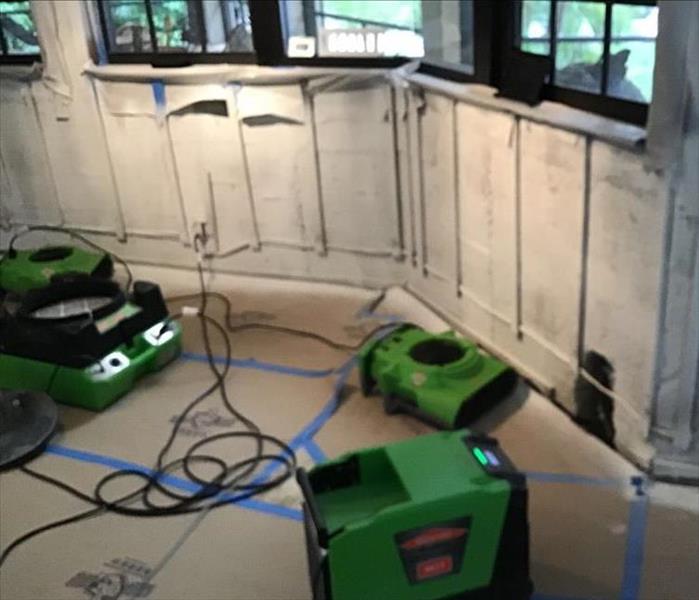
Step 4: Drying and Dehumidification
Our Water Damage Restoration Process
The next step in the process is Drying and Dehumidification.
Step 3 was removing excess water. In step 4 our teams will be removing moisture from the property. It’s possible after the water is removed that your property may appear visibly “back to normal,” but a quick moisture level inspection can reveal wet material lurking behind walls.
Building materials hold water. Wood, drywall and flooring is porous and provides ample room for water and moisture. If at this point nothing is done to address the excess moisture in your space mold will start to take hold and your water damage problem is now a mold problem — and that’s not good.
Our SERVPRO of Weston / West Davie team has the drying and dehumidification tools to properly mitigate and restore your property.
Here to help.
Drying / Dehumidification
Our Professionals will use room measurements, temperature, and relative humidity to determine the optimal number of air movers and dehumidifiers to dry your home or business. We’ll carefully monitor the progress using moisture meters until the materials return to acceptable drying goals.
- Use Dehumidification Equipment
- Use Monitoring Equipment to Track Progress
Monitor Floor and Walls
We check the moisture levels to monitor the drying process.
- Monitor Floors
- Monitor Walls
Drying Equipment
- Industrial-grade dehumidifiers help prevent secondary water damage like swelling and warping of floors, walls, and furniture.
- High-speed air movers create airflow across walls, carpets, pads, and furniture, which accelerates the evaporation of moisture.





 24/7 Emergency Service
24/7 Emergency Service


